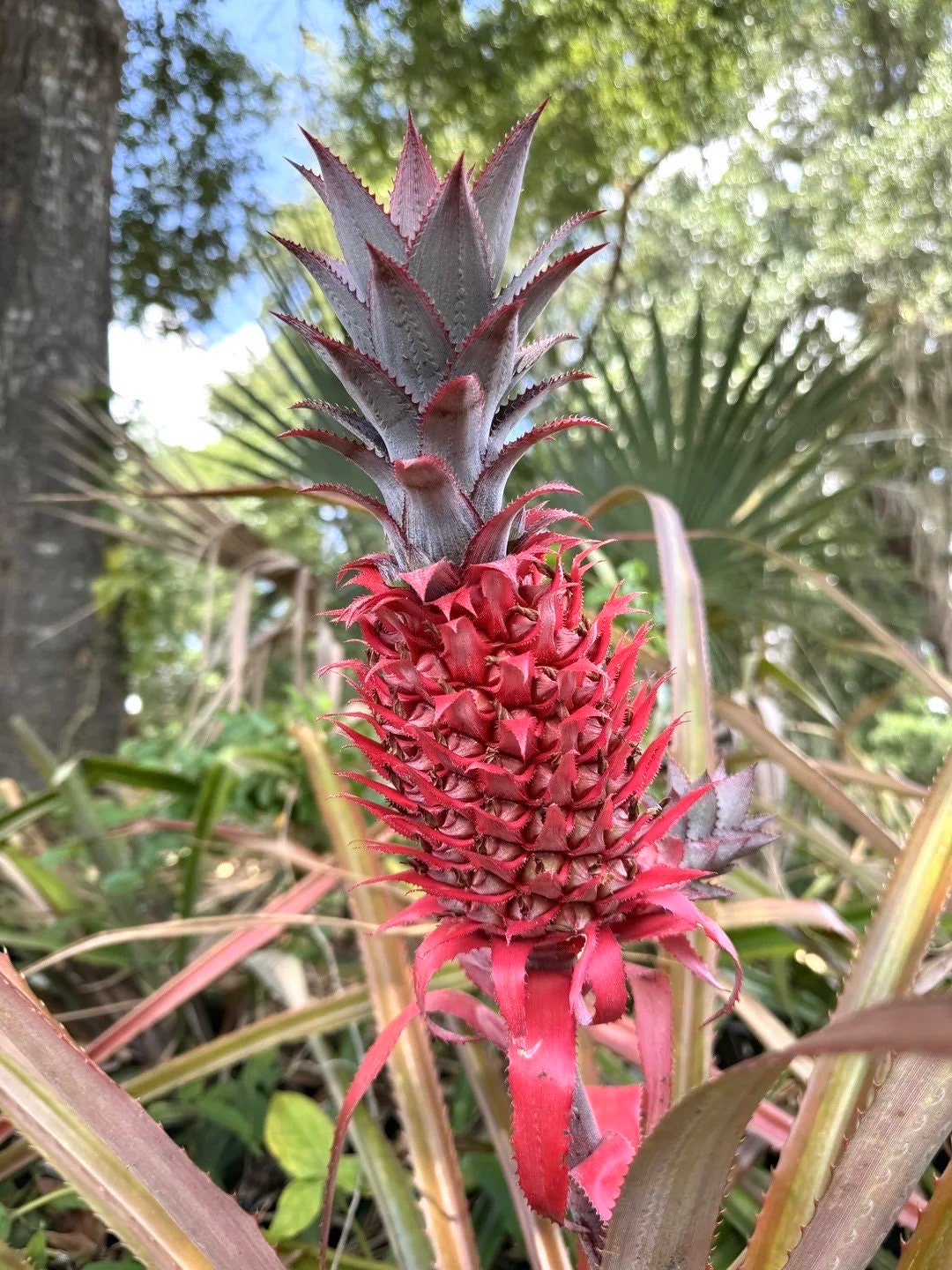Alright, let’s dive into the wonderful world of pineapple plants and how they grow that delicious, spiky fruit we all love!
The Amazing Pineapple Plant: More Than Just a Tropical Treat
Ever bitten into a juicy piece of pineapple and wondered where it all comes from? Well, it starts with a pretty cool plant, the Ananas comosus. Don’t let the fancy Latin name scare you; it’s just the scientific way of saying “pineapple in a tuft.” And trust me, this plant has a story to tell, even without any flashy pictures.
Think of a pineapple plant as a ground-hugging superhero of the tropics. It doesn’t grow on trees like apples or oranges. Instead, it’s a herbaceous perennial, which basically means it’s a leafy plant that lives for more than two years, popping up from the ground. Imagine a tough rosette of long, waxy leaves that can be a bit spiky along the edges – almost like a natural fortress protecting something precious in the center.

From the Ground Up: How a Pineapple Plant Grows
So, how does this ground-level guardian produce that iconic fruit? It’s a fascinating process. In the heart of that leafy rosette, a flower spike starts to emerge. This spike is covered in lots and lots of little flowers, each with its own tiny bract (a special kind of leaf). Now, here’s the cool part: these individual flowers don’t develop into separate fruits. Instead, they fuse together to form what we recognize as a pineapple! It’s like a botanical team effort.
As these flowers merge, the stem thickens and becomes fleshy. The bracts on the outside develop into the tough, scaly skin of the pineapple. And those little “eyes” you see on a pineapple? Each one is a remnant of one of those individual flowers. Pretty neat, huh?
Patience is a Pineapple Virtue

Growing a pineapple isn’t a super speedy process. It can take a while – sometimes a year or even two – from planting to harvesting that golden fruit. The plant needs warm temperatures, plenty of sunshine, and just the right amount of water. Too much water can lead to root rot, which is bad news for any plant.
Once the pineapple fruit starts to mature, it gradually changes color, usually from green to yellow or sometimes reddish, depending on the variety. It also starts to give off that sweet, tropical aroma that makes your mouth water. Farmers know just when to pick them to ensure they’re perfectly ripe and delicious.
More Than Just the Fruit: The Pineapple Plant’s Other Talents
The pineapple plant is more than just a producer of tasty fruit. Those tough leaves we talked about? They’re actually quite useful. In some parts of the world, the strong fibers from the leaves are extracted and used to make things like ropes, textiles, and even paper! Talk about a multi-talented plant.
And that little crown of leaves on top of the pineapple? If you’re feeling adventurous, you can actually try planting it! With a little patience and care, it might just grow into a whole new pineapple plant, continuing the cycle.
A Global Traveler: The Pineapple’s Journey
Believe it or not, pineapples weren’t always found everywhere they are today. They originated in South America, likely in the area between Brazil and Paraguay. From there, they spread throughout the Americas and eventually, thanks to explorers, made their way to other tropical regions around the globe. Today, you’ll find pineapple plantations in places like Hawaii, the Philippines, Thailand, and many other warm, sunny countries.
Conclusion: A Remarkable Plant
So, the next time you enjoy a slice of pineapple, take a moment to appreciate the incredible journey and the fascinating biology of the pineapple plant. From its humble beginnings as a ground-hugging rosette of leaves to the fusion of hundreds of tiny flowers into a single delicious fruit, it’s a testament to the wonders of nature. It’s a plant that not only provides us with a sweet treat but also has a rich history and surprising versatility.
Frequently Asked Questions About Pineapple Plants
How long does it take for a pineapple plant to produce fruit?
It typically takes between one and two years for a pineapple plant to produce a mature fruit after planting. This timeframe can vary depending on factors like climate, variety, and growing conditions.
Can you grow a pineapple from the top of a store-bought pineapple?
Yes, you can! Carefully twist or cut off the leafy crown from the top of a ripe pineapple. Remove the lower leaves to expose the stem, let it dry for a day or two, and then plant it in well-draining soil. With consistent watering and sunlight, it may eventually root and grow into a new plant.
What kind of climate do pineapple plants need?
Pineapple plants thrive in warm, tropical and subtropical climates with temperatures between 68°F and 86°F (20°C and 30°C). They are sensitive to frost and need plenty of sunshine to grow and produce fruit.
Do pineapple plants need a lot of water?
Pineapple plants prefer moderate watering. While they need consistent moisture, especially during dry periods and fruit development, overwatering can lead to root rot. It’s best to allow the soil to dry out slightly between waterings.
Are pineapple plants perennials?
Yes, pineapple plants are herbaceous perennials. This means they can live for several years and produce fruit more than once, although the subsequent harvests might be smaller than the first.


:max_bytes(150000):strip_icc()/luffa-plant-profile-4796761-hero-7967b71fd40945749c7513e3c90d33a5.jpg?resize=200,135&ssl=1)
:max_bytes(150000):strip_icc()/SPS-calathea-ornata-04-f03b60a264fd49e1b8abf15282fcf607.jpg?resize=200,135&ssl=1)